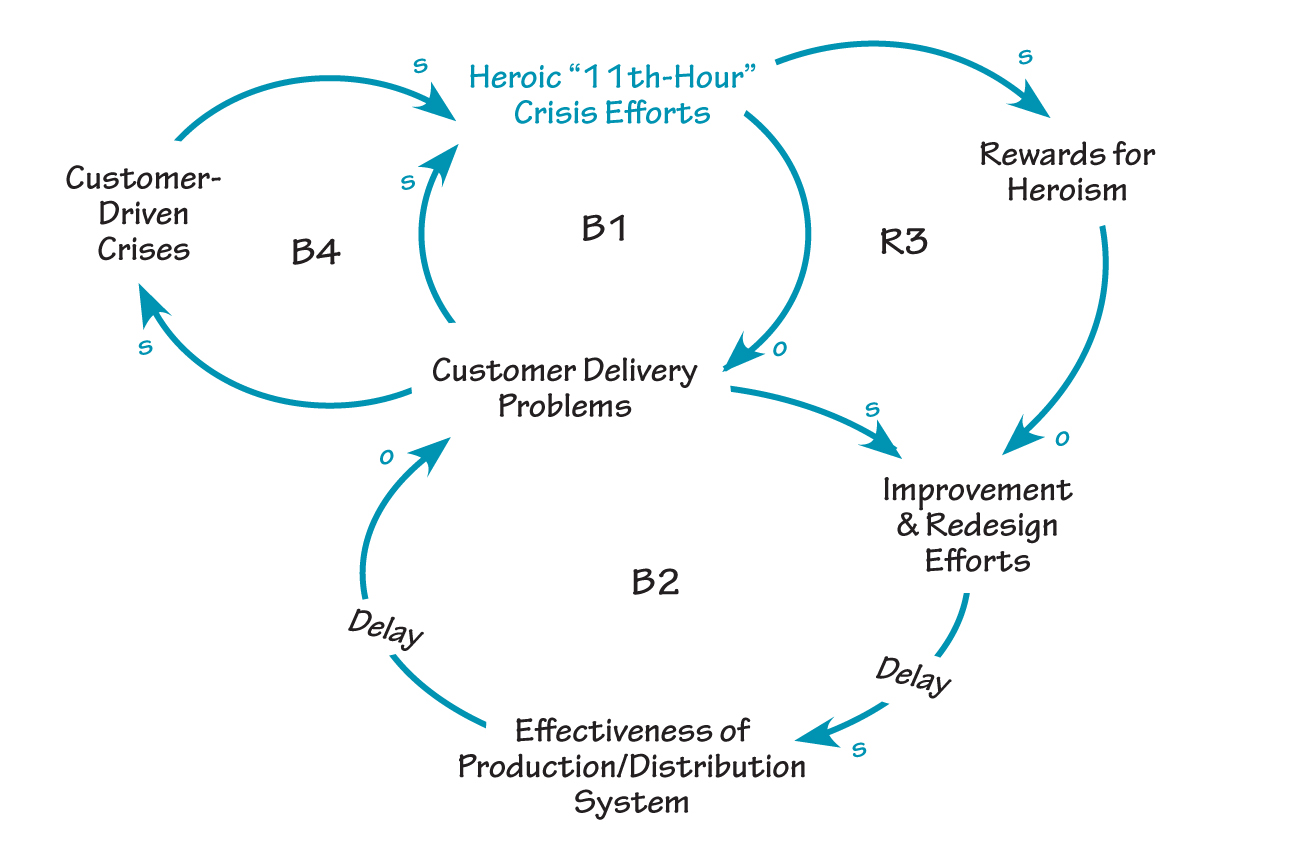Favorites from the Field
David Peter Stroh
-
Moving from Blame to Accountability
By Marilyn Paul -
Six Steps to Thinking Systemically
By Michael Goodman, Richard Karash -
Using the Archetype Family Tree as a Diagnostic Tool
By Michael Goodman, Art Kleiner
Peter Senge
-
Transforming the Systems Movement
By Russell Ackoff -
The “Thinking” in Systems Thinking: Honing Your Skills
By Barry Richmond -
Applying System Dynamics to Public Policy: The Legacy of Barry Richmond
By Steve Peterson -
We Can’t Keep Meeting Like This: Developing the Capacity for Cross-Sector Collaboration
By Mille Bojer -
Pocket Guide: Using the Archetypes
By Daniel Kim, Colleen Lannon
Gene Bellinger
Sign up to stay in the loop
Receive updates of new articles and save your favorites.
About The Systems Thinker
Building shared understanding
The Systems Thinker works to catalyze effective change by expanding the use of systems approaches. All articles are available free of charge in an effort to expose as wide of audience as possible. Browse, share with others, save your favorites and tell others about this valuable resource!
Popular
Learning About Connection Circles
The topics elementary- and middle-school students today study are complex and often difficult to understand. Seldom is an issue as simple as it appears…
The Learning Organization Journey: Assessing and Valuing Progress
Suppose you have just been appointed the CKO—Chief Knowledge Officer—of your organization. You are responsible for managing the company’s knowledge capital, including how it…
The Inner Path of Leadership
In Synchronicity: The Inner Path of Leadership, Joe Jaworski illuminates the nature of the choice to lead and the profound worldview out of which…
Empowering Multigenerational Collaboration in the Workplace
Today’s workforce represents a broad range of age groups. As a result of college internships, modern healthcare, antidiscrimination laws, and a plethora of lifestyle…
Toyota’s Current Crisis: The Price of Focusing on Growth Not Quality
For the past 15 years or so, I have told audiences a story about how my perception of what determines good business performance has…
People in Context, Part II
The first part of this article, which appeared in the previous issue of The Systems Thinker (May 2010, Vol. 21 N. 4), introduced the “people-in-context”…
The Nature and Creation of Chaordic Organizations
We are living on the knife’s edge of one of those rare and momentous turning points in human history. Liveable lives for our grandchildren,…
Shifting the Burden: Moving Beyond a Reactive Orientation
Although the parable of the boiled frog has become a familiar story in organizational learning circles, it does not yet seem to prevent organizations…
Comfort Zones
It’s a good thing we have comfort zones, those ways of acting and thinking that do not cause us stress or require much thought.
Escalation: The Dynamics of Insecurity
Have you ever been caught in a situation where you felt that things were going well beyond what you intended, but you felt powerless to…
It Will Take Time to Perfect Recycling
Periodic gluts and shortfalls in the recycling industry aren’t a signal that recycling doesn’t work, says Donella Meadows. Such behavior is characteristic of any system…
The Learning Construction Site: Unlearning and Rebuilding New Knowledge
I grew up and was educated in Rome, Italy. The European didactic style tends to be more theoretical and less interactive than that of…
Connecting to Source: The U-Process
As a writer, on a handful of occasions, I’ve produced work that stands far above everything else I’ve written. This work has a special…
The World Cafe: Living Knowledge Through Conversations That Matter
Consider all the learning that occurs as people move from place to place inside and outside an organization, carrying insights and ideas from one…
Four Conversations in a Successful Workplace
Everything we talk about involves one or more of four types of conversation. We use them when we are socializing, talking about the weather,…
What is Your Organization’s Core Theory of Success?
Managers in today’s organizations are continually confronted with new challenges and increased performance expectations. At the same time, they are bombarded by a bewildering…
From Riots to Resolution: Engaging Conflict for Reconciliation
As members of communities and organizations, many people feel their days (and their energy!) being consumed by contentious conflicts between diverse stakeholder groups. Organizations…
Modeling “Soft” Variables
When encountering system dynamics modeling for the first time, sharp-minded managers often ask, “How can you have any confidence in your model if you…
Leanness
Corporations today face many pressures to become “lean.” Unfortunately, most people also attach “mean” to lean, which can lead us to confuse leanness with…
Making It Happen: The Implementation Challenge
About seven years ago, a Fortune 100 corporation began a three-year, $2 million organizational experiment. The goal was to gain a sustainable competitive advantage…
Using “Fixes That Fail” to Get Off the Problem-Solving Treadmill
It’s Monday morning. You’ve just settled in at your desk to catch up on some reading, when the phone rings. The program manager of the…
Levels of Understanding: “Fire-fighting” at Multiple Levels
It’s another busy night in the hospital emergency room. Several car accident victims have been rushed into surgery, one little boy is having a…
Stress Management–Whose Job Is It?
Stress management — long the domain of psychiatrists and therapists — is increasingly being recognized by corporate America as a critical workforce issue. The reason…
Designing Effective Learning Environments
Imagine you are part of a healthcare team that has developed a computer model to grapple with the complex and often conflicting factors involved…
The Need to Understand One Another
Years ago, before diversity became an almost faddish concern for managers everywhere, a wise older gentleman, John Bemis, helped me see the deep connections…
Leading from the Future: A New Social Technology for Our Times
We live in a time of massive institutional failure, collectively creating results that nobody wants. Climate change. AIDS. Hunger. Poverty. Violence. Terrorism. Destruction of…
Embracing Vulnerability:A Core Leadership Discipline for Our Times
World events over the past several years have highlighted the need for new ways of exercising leadership. Such events include the ongoing crisis in…
How Learning Works
Recently, I had a long conversation with my fifteen-year-old daughter, Elise, about why she had to learn algebra. I had helped her with a…
People in Context, Part I
Our efforts to understand and intervene in organizational events have a persistent bias: to interpret phenomena from a personal framework. In other words, situations…
Confessions of a Recovering Knower
Hi, my name is Brian and I am a recovering knower. But for the grace of God, and the disciplines of organizational learning, I…
Working in an Unhappy Place: Reengaging Disaffected Employees Through Conflict Resolution
Why can’t we all just get along?” asked Rodney King famously, echoing the sentiments of many of us who have at some point or…
It’s Not a Behavioral Problem: It’s the System
Don’t ask systems thinkers for advice on managing performance or staff engagement. They will probably say something pretty fruity, and you’ll wind up frustrated…
Working in High-Leverage Zones with the Double-Loop Learning Matrix
T he Double-Loop Learning Matrix (adapted from the work of John J. Shibley) is a tool that teams can use for uncovering and articulating…
The Common Flaw of All Problem-Solving Models
We suspect that every reader of this newsletter has been steeped in articles and classes on a myriad of problem-solving techniques. We have all…
Selecting Variable Names for Causal Loop Diagrams
When first beginning to draw a causal loop diagram, don’t spend a lot of time up front trying to select the “perfect” variable name.
Weaving Systems Thinking into the K–12 Curriculum
Thanks to the recently revised science and environmental sustainability education standards in the Washington State K–12 system, teachers are now required to teach and…
Systems Thinking Concepts for Environmental Education
The goal of education for sustainability (EFS) is “to develop in young people and adults new knowledge and new ways of thinking needed to…
Systems Archetypes As Structural Pattern Templates
Imagine you were suddenly struck with a strange illness that affected your vision. While you were still able to “see” everything around you, somehow…
Systems Archetypes as Dynamic Theories
Most people are familiar with the Sufi tale of the four blind men, each of whom is attempting (unsuccessfully) to describe what an elephant…
Systems Archetypes III: Understanding Patterns of Behavior and Delay
The latest volume of the acclaimed Toolbox Reprint Series, Daniel Kim takes a deeper look at the “signature” patterns of behavior associated with each systems…

Six Steps to Thinking Systemically
Bijou Bottling Company is a fictitous beverage bottler with an all too real problem: chronic late shipments. Its customers—major chain retailers—are looking for orders…
Systems Archetypes II: Using Systems Archetypes to Take Effective Action
Toolbox Reprint Series Systems Archetypes II Using Systems Archetypes to Take Effective Action More than just a “how-to” guide; this companion guide to our bestselling…
The “Thinking” in Systems Thinking: Honing Your Skills
Why is it so challenging to develop systems thinking ability? It’s because thinking systemically involves a rather large number of different skills—seven, at least—that…
A Lifetime of Systems Thinking
When one reaches 80, one is considered to be ripe and ready for picking. Picking usually consists of the pickers asking the pickee to…
Fixes that Fail: Why Faster is Slower
Mqost of us are familiar with the paradox that asks, “Why is it that we don’t have the time to do things right in…
What Is the Relationship Between Systems Thinking and Lean?
What is the relationship between systems thinking and lean? That’s a fascinating question, one not so easily answered, because we’re talking about two very…
The “Living” Company: Extending the Corporate Lifeline
In the 1970s, diversification was the rage. But by the early 1980s, serious doubts had surfaced in the Shell Group about the wisdom of…




